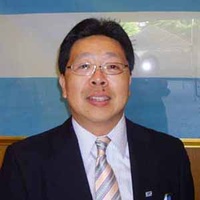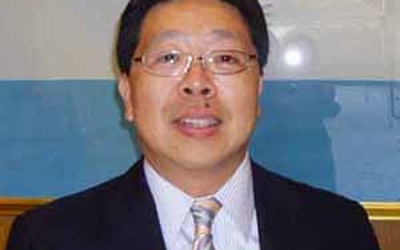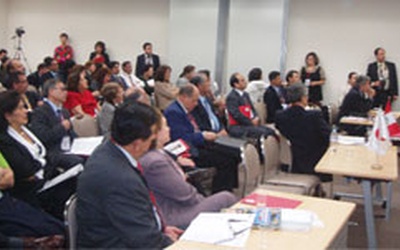The Nikkei of Latin America and Latino Nikkei

Lic. Alberto Matsumoto examines the many different aspects of the Nikkei in Japan, from migration politics regarding the labor market for immigrants to acculturation with Japanese language and customs by way of primary and higher education. He analyzes the internal experiences of Latino Nikkei in their country of origin, including their identity and personal, cultural, and social coexistence in the changing context of globalization.
Stories from this series

What is the Latino Japanese Labor Market like?
May 21, 2008 • Alberto J. Matsumoto
The foreign population in Japan is over 2 million, with South American workers and their households numbering nearly 400,000. There is little doubt that the "dekasegi" of the early 1990s have now become "immigrants." Although nearly half still say they will "go back to their home country someday," contrary to their words, the settlement rate has been high in recent years (the rate of obtaining permanent residence visas has exceeded 30%), and an increasing number of people are starting families …

Latino-Japanese people's home countries, hometowns, countries of residence, and countries of origin
April 10, 2008 • Alberto J. Matsumoto
It is said that when people emigrate, they miss their home country, whatever the reason may be. Even if they are fleeing in the middle of the night, seeking asylum for political reasons, or if they are forced to go abroad to work because of economic or social circumstances, institutional distortions, or unbearable disparities that make it difficult to make ends meet, they will miss their hometown after six months or a year. On application forms for identification cards and …

Japanese-Americans in the debate over multicultural coexistence
March 6, 2008 • Alberto J. Matsumoto
The concept of multicultural coexistence has taken root in European countries and Canada, and has recently become a common word here in Japan. Countries with a large number of immigrants have sought ways to foster coexistence between foreigners and local residents based on this concept. Multicultural coexistence refers to cultural diversity at the civil and social levels, and refers to the acquisition and exercise of basic human rights (including universal rights such as those adopted by the United Nations' Covenant …

Studying and training in Japan for Japanese descendants, its significance and how it can be used to plan for the future
Feb. 7, 2008 • Alberto J. Matsumoto
It is not uncommon these days for people of Japanese descent from Latin America to study in Japan. There are regular scholarship programs (such as the Ministry of Education, Culture, Sports, Science and Technology's scholarship program for foreign students), the JICA Nikkei trainee program for people of Japanese descent only, prefecturally funded study abroad programs, and the Nippon Foundation's Nikkei Scholarship, which began a few years ago. Approximately 200 people a year use these programs to receive specialized training in …

Japanese language education in Japanese communities in South America and Spanish language for children of Japanese workers living in Japan
Jan. 3, 2008 • Alberto J. Matsumoto
It is said that there are about 3 million Japanese language learners in the world, 1 but in Latin America, where there were many Japanese immigrants, the number is just over 40,000, or about 1.2% of the total. Looking at countries with colonies (agricultural settlements where Japanese people and their descendants live together) where immigrants have settled, or countries such as Brazil, which has more than 1.3 million Japanese descendants, the details of Japanese language learners are 21,000 in Brazil, …

Thinking about the first Overseas Peruvian Convention, the COPANI Convention, and the Overseas Japanese Convention
Dec. 14, 2007 • Alberto J. Matsumoto
About a month ago, from November 2nd to 4th, the first "Conference of Peruvians Living in Japan" was held in Tokyo along with the third "United Conference of Peruvian Organizations Abroad1 ." 2 It has been nearly 20 years since Peruvians came to Japan as Japanese workers, and while it is very pleasing that such a conference was held at such a turning point, it also shows that Peruvians are attracting attention as immigrants not only in Japanese society but …
 We’re looking for stories like yours!
Submit your article, essay, fiction, or poetry to be included in our archive of global Nikkei stories.
Learn More
We’re looking for stories like yours!
Submit your article, essay, fiction, or poetry to be included in our archive of global Nikkei stories.
Learn More
New Site Design
See exciting new changes to Discover Nikkei. Find out what’s new and what’s coming soon! Learn MoreNisei Japanese-Argentine. In 1990, he came to Japan as a government-financed international student. He received a Master’s degree in Law from the Yokohama National University. In 1997, he established a translation company specialized in public relations and legal work. He was a court interpreter in district courts and family courts in Yokohama and Tokyo. He also works as a broadcast interpreter at NHK. He teaches the history of Japanese immigrants and the educational system in Japan to Nikkei trainees at JICA (Japan International Cooperation Agency). He also teaches Spanish at the University of Shizuoka and social economics and laws in Latin America at the Department of law at Dokkyo University. He gives lectures on multi-culturalism for foreign advisors. He has published books in Spanish on the themes of income tax and resident status. In Japanese, he has published “54 Chapters to Learn About Argentine” (Akashi Shoten), “Learn How to Speak Spanish in 30 Days” (Natsumesha) and others. http://www.ideamatsu.com
Updated June 2013

Discover Nikkei Updates



See exciting new changes to Discover Nikkei. Find out what’s new and what’s coming soon!

